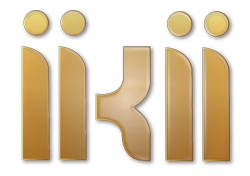Research Article
Changes in the Ghanaian schools’ mathematics curriculum – Exploring the need to raise awareness in the integration of the history of mathematical concepts as a pedagogical tool
More Detail
1 PRESBYTERIAN COLLEGE OF EDUCATION2 AKENTEN APPIAH-MENKA UNIVERSITY OF SKILLS TRAINING AND ENTREPRENEURIAL DEVELOPMENT3 Akenten Appiah-Menka University of Skills, Technology and Entrepreneurial Development, Kumasi, Ghana4 University of Tennessee, Knoxville, United States* Corresponding Author
Educational Innovations and Emerging Technologies, 4(1), 2024, 1-12, https://doi.org/10.35745/eiet2024v04.01.0001
Published: 22 May 2024
OPEN ACCESS 1045 Views 1549 Downloads
Author Contributions: K. K. Agbozo conceived the study and wrote the manuscript; E. Bonyah reviewed the manuscript and provided the needed suggestions; and L. J. Clark provided further input in the review processes. All participants consented to participate in the study voluntarily.
Data Availability Statement: The data of this study are available from the corresponding author upon reasonable request.
Data Availability Statement: The data of this study are available from the corresponding author upon reasonable request.
ABSTRACT
There have been frequent changes to the Ghanaian mathematics curriculum content but with little or no regard for the pedagogical strategies to deliver the content. It was, therefore, important to explore teachers' awareness of integrating the history of mathematical concepts as a pedagogical strategy in teaching mathematics. The study employed the interpretive paradigm, using the qualitative inductive approach of an explorative case study with eight participating secondary school mathematics teachers. The interviews were conducted and transcribed for analysis using content analysis. The results indicated that while most teachers were enthusiastic about the use of the history of mathematical concepts as a strategy, they hardly employed it as a critical approach to teaching mathematics, and those who were aware of it merely used it as a form of introduction to their lessons. This limited the level of engagement of learners in the history of mathematical concepts in learning mathematics. Conclusions and recommendations were discussed.
CITATION (APA)
AGBOZO, K. K., Bonyah, E., & Clark, L. J. (2024). Changes in the Ghanaian schools’ mathematics curriculum – Exploring the need to raise awareness in the integration of the history of mathematical concepts as a pedagogical tool. Educational Innovations and Emerging Technologies, 4(1), 1-12. https://doi.org/10.35745/eiet2024v04.01.0001
REFERENCES
- Adu-Gyamfi1, S., Donkoh, W. J., & Addo, A. A. (2016). Educational Reforms in Ghana: Past and present. Journal of Education and Human Development, 5 (3), 158–172. https://doi.org/10.15640/jehd.v5n3a17
- Arsham, H. (2020). Zero in four dimensions: Historical psychological, cultural and logical perspective. Available online: https://www.researchgate.net/publication/344907292 (accessed on April 28, 2023)
- Azman, N. A., & Maat, S. M. (2021). Integration of the history of mathematics in mathematics education: A systematic literature review. International Journal of Academic Research in Business and Social Sciences, 11(4), 1035–1057
- Bidwell, J. K. (1993). Humanize your classroom with the history of mathematics. The Mathematics Teacher, 86(6), 461–464. https://www.jstor.org/stable/27968440
- Black, M. (1951). Achilles and the Tortoise. Analysis, 11(5), 91–101. https://www.jstor.org/stable/3326455
- Bolinger-Horton, L. & Panasuk, R. M. (2011). Raising awareness of the history of mathematics in high school curriculum. International Journal of Humanities and Social Science, 1(16), 37–46.
- Burns, B. A. (2010). Pre-service teachers’ exposure to using the history of mathematics to enhance their teaching of high school mathematics. IUMPST: The Journal, 4, 1–9.
- Butuner, S. O. (2015). Using history of mathematics to teach volume formula of frustum pyramids: Dissection method. Universal Journal of Educational Research, 3(12), 1034–1048. https://doi.org/10.13189/ujer.2015.031213
- Butuner, S.O., & Baki, A. (2020). The use of history of mathematics in the mathematics: An action research. International Journal of Mathematics, Science and Technology, 8 (2), 93–117.
- Cajori, F. (1923). The history of notations of the calculus. Annals of Mathematics, 25(1), 1–46. https://www.jstor.org/stable/1967725
- Charalambous, C. Y., Panaoura, A., & Philippou, G. (2009). Using the history of mathematics to induce changes in preservice teachers’ beliefs and attitudes: Insights from evaluating a teacher education program. Educ. Stud. Math. 71, 161–180. https://doi.org/10.1007/s10649-008-9170-0
- Chorlay, R., Clark, K. M., & Tzanakis, C. (2022). History of mathematics in mathematics education: Recent developments in the field. ZDM —Mathematics Education, 54. 1407–1420. https://doi.org/10.1007/s11858-022-01442-7
- Clark, K., Kjeldsen, T. H., Schorcht, S., Tzanakis, C., & Wang X. (2016). History of mathematics in mathematics education. Recent developments. History and Pedagogy of Mathematics, 1, hal-01349230.
- Doz D. (2021). Using the history of mathematics as a motivational factor in teaching math. Science, teaching, learning in a changed social context, 2021, 471–482. https://doi.org/10.46793/NNU21.471D.
- Elo, S., & Kyngas, H. (2008). The qualitative content analysis process. Journal of Advanced Nursing, 62(1), 107–115, doi: 10.1111/j.1365-2648.2007.04569.x
- Fauvel, J. (1991). Using history in mathematics education. For the Learning of Mathematics, 11(2), 3–6.
- Ferreira, R. A. T., & Rich, B. S. (2001). Integrating history of mathematics into the mathematics classroom. Quadrante, 10(2), 67–96.
- Finashin, S. (2015). History of math concepts. Available online: https://users.metu.edu.tr/serge/courses/303-2015/Book-essentials-A4.pdf (accessed on April 20, 2023).
- Goktepe, S., & Ozdemir, A. (2013). An example of using history of mathematics in classes. European Journal of Science and Mathematics Education, 1(3), 125–136.
- Haverhals, N., & Roscoe, M. (2010). The history of mathematics as a pedagogical tool: Teaching the integral of the secant via Mercator’s projection. The Mathematics Enthusiast, 7(2), 12. https://doi.org/10.54870/1551-3440.1193
- Ho, W. K. (2008). Using history of mathematics in the teaching and learning of mathematics in Singapore. Semantic Scholar, 1–36. Corpus ID: 1804297
- Kivunja, C., & Kuyini, A. B. (2017). Understanding and applying research paradigms in educational contexts. International Journal of Higher Education, 6(5), 26–41. https://doi.org/10.5430/ijhe.v6n5p26
- Kurt, S. (2020). Lev Vygotsky—Sociocultural theory of cognitive development. Available on: https://educationaltechnology.net/lev-vygotsky-sociocultural-theory-of-cognitive-development (accessed on April 20, 2023).
- Liu, P. (2003). Do teachers need to incorporate the history of mathematics in their teaching? Mathematics Teacher, 96(6), 416–421.
- Saleem, A., Kausar, H., & Deeba, F. (2021). Social Constructivism: A New Paradigm in Teaching and Learning Environment. Perennial Journal of History, 2(2), 403–421.
- Melnikovas, A. (2018). Towards an explicit research methodology: adapting research onion model for future studies. Journal of Futures Studies, 23(2), 29–44. https://doi:10.6531/JFS.201812_23(2).0003 ARTICLE 29
- Mendes, I. A. (2020). History for the teaching of mathematics: Transformation and mobilization of mathematical knowledge for school. Pedagogical Research, 5(3), em0072. https://doi.org/10.29333/pr/8284
- Mereku, D. K. (2010). Five decades of school mathematics in Ghana. Mathematics Connection, 9, 73–88.
- Merino, O. (2006). A short history of complex numbers. Available on: https://www.math.uri.edu › spring06 › mth562 (accessed on April 20, 2023).
- National Council for Curriculum and Assessment (NaCCA), (2020). Mathematics common core programme curriculum Ministry of Education, Ghana Education Service. Available online: http://www.nacca.gov.gh (accessed on April 28, 2023).
- Palmeri, A.B. (2015). Building Prospective Early Childhood Teachers Content Knowledge Through Historical Reasoning Tasks, Social Studies Research and Practice, 10(3), 57–68. https://doi.org/10.1108/SSRP-03-2015-B0004
- Panasuk, R. M., & Horton, L. B. (2013). Integrating history of mathematics into the classroom: Was Aristotle wrong? Journal of Curriculum and Teaching, 2(2), 37–46. http://dx.doi.org/10.5430/jct.v2n2p37.
- Panasuk, R. M., & Horton, L. B. (2012). Integrating history of mathematics into curriculum: What are the chances and constraints? International Electronic Journal of Mathematics Education, 7(1), 3–20.
- Stigler, J. W., & Hiebert, J. (2004). Improving mathematics teaching. Educational Leadership, 61(5), 12–17.
- Syaf, A. H., Ariany, R. L., & Rachmawati, T. K. (2018). Al-Khawarizmi: Algebra Factory Method. In International Conference on Islamic Education (ICIE 2018), Bandung, Indonesia. March 28–30, 2018, pp. 72–78
- Tzanakis, C., Arcavi, A., de Sa, C. C., Isoda, M., Lit, C.-K., Niss, M., de Carvalho, J. P., Rodriguez, M., & Siu, M.-K. (2002). Integrating history of mathematics in the classroom: An analytic survey. In History in Mathematics Education. Berlin/Heidelberg, Germany: Springer. https://doi.org/10.1007/0-306-47220-1_7
- Vallhonesta, F. R., & Massa-Esteve, M. R. (2019). Sources from 16th century for the teaching and learning of mathematics. Proceedings of the Eighth European Summer University on History and Epistemology in Mathematics Education ESU 8. Oslo, Norway, July 20–24, 2018, p. 626–639. http://hdl.handle.net/2117/177889


 The articles published in this journal are licensed under the CC-BY Creative Commons Attribution International License.
The articles published in this journal are licensed under the CC-BY Creative Commons Attribution International License.